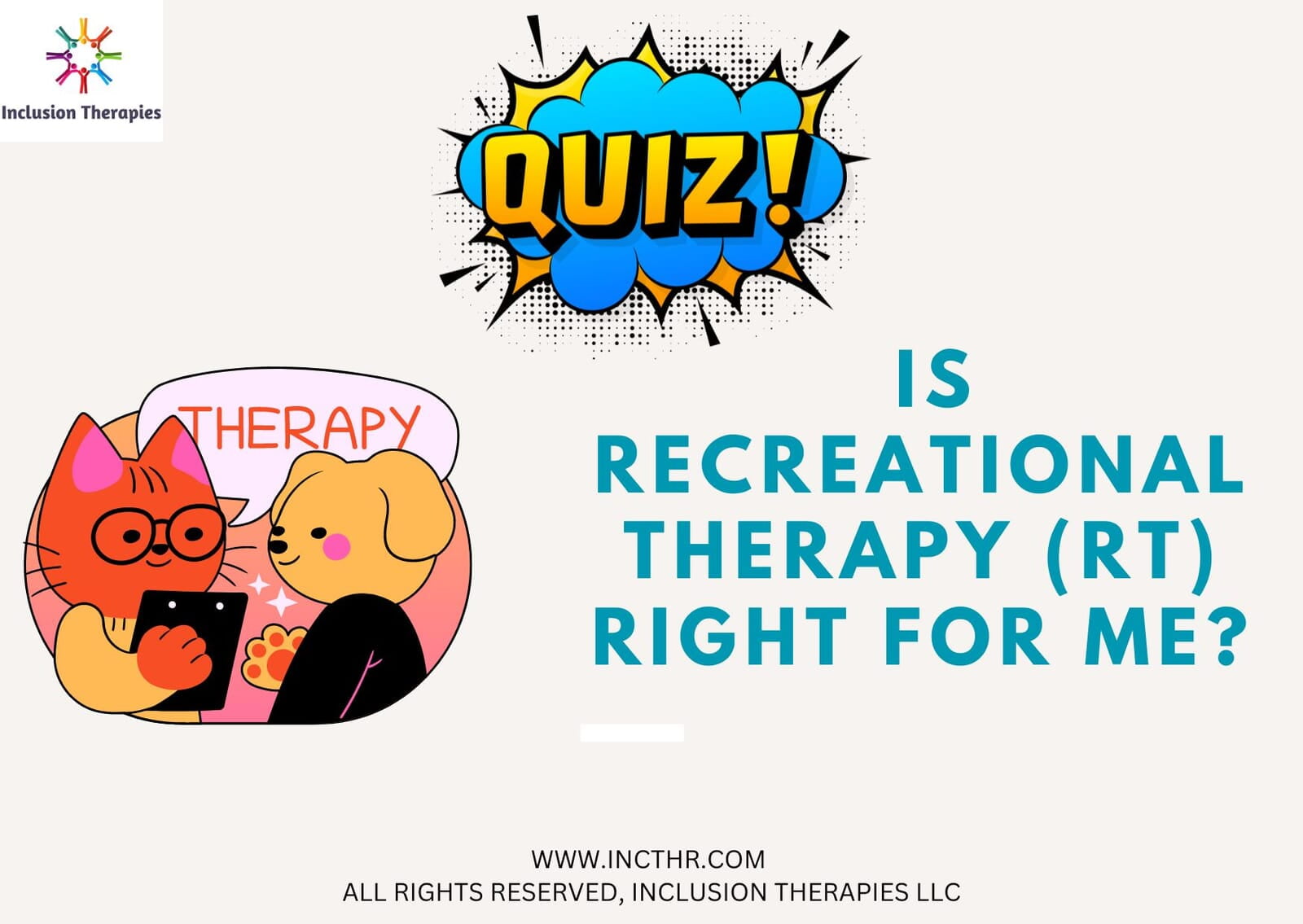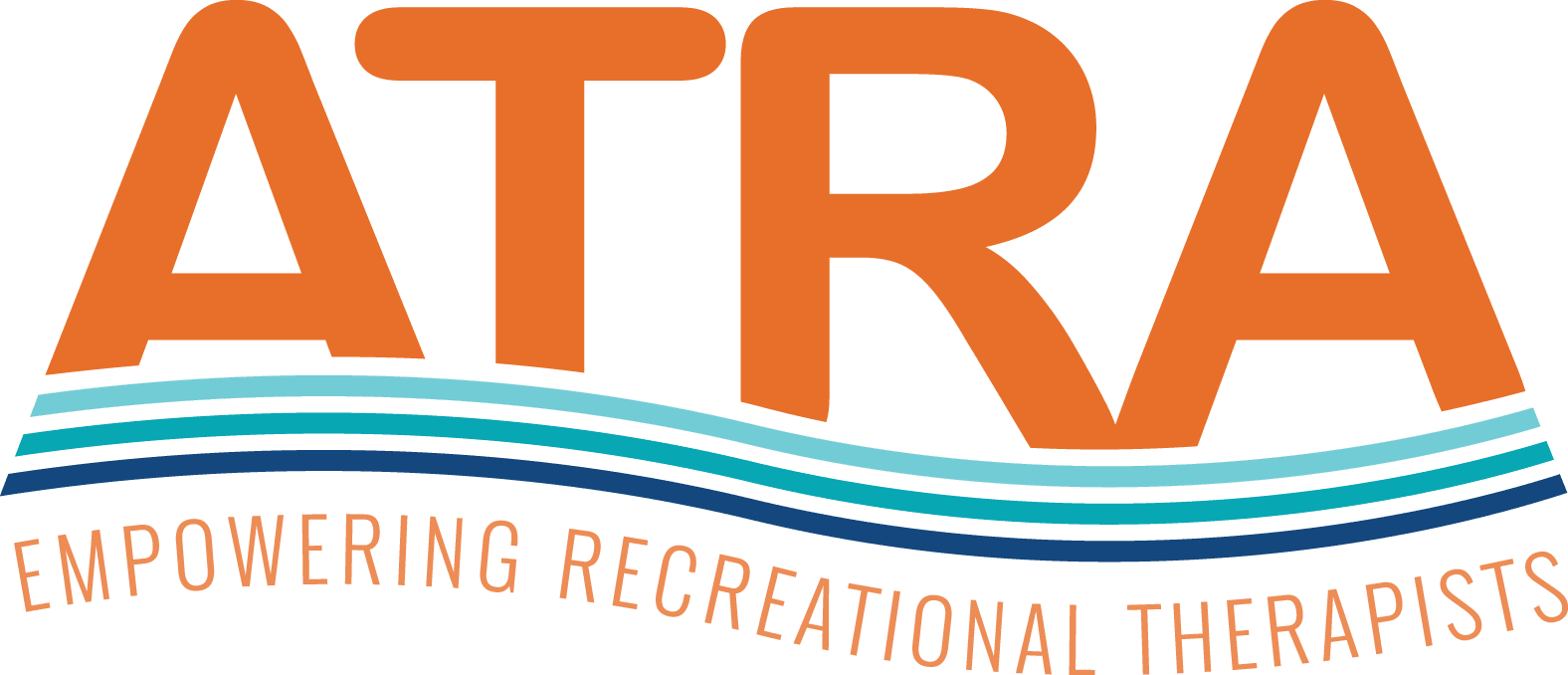
Treatment Activity:
Aquatic Recreational Therapy
Not Included in Membership -
Contact us for service availability
FAQ: Aquatic Recreational Therapy
- Aquatic therapy includes water exercise and swimming activities for the prevention, treatment and rehabilitation of health conditions.
View Educational Video from Veterans Administration, Cleveland:
Educational Video from Oklahoma State Department of Education:
Aquatic Recreational Therapy is NOT included in the monthly membership. If you are interested in this service, please contact our office to discuss options.
- If this service is available (based on staffing and service logistics), Inclusion Therapies utilizes a variety of central Texas pools for aquatic therapy. Clients and therapist team will follow water safety policies and procedures at all times. The Clinical Director is a certified aquatic therapist.
- In collaboration with the therapist team, the client will select an aquatic exercise and/or swimming activity relating to their healthcare outcomes.
"The field of therapeutic recreation trains students to develop and implement evidence-based facilitation techniques including the use of aquatic therapy to assist in helping clients achieve a change in functional status. This review of the literature examined the impact of aquatic therapy interventions on a variety of disabilities including osteoarthritis, multiple sclerosis, Cerebral palsy, autism spectrum disorder, and mental health from a recreational therapy (RT) perspective. [...] It does appear that aquatic therapy interventions can provide a wide array of benefits that may reduce the burden associated with a variety of disabilities. These benefits may be useful in increasing the overall quality of life of a diverse group of disabilities. Likewise, due to the nature of RT, recreational therapists are in a unique position to provide plan and develop aquatic therapy interventions."
- Scott, Jason; Wozencroft, Angela; Nocera, Vincenzo; Webb, Kelsey; Anderson, Jodi; Blankenburg, Avery; Watson, Darrien; and Lowe, Sophie (2020) "Aquatic Therapy Interventions and Disability: A Recreational Therapy Perspective," International Journal of Aquatic Research and Education: Vol. 12: No. 3, Article 5. DOI: https://doi.org/10.25035/ijare.12.03.05 / Available at: https://scholarworks.bgsu.edu/ijare/vol12/iss3/5
"This study supported previous findings that participation in [Aquatic Therapy] AT by individuals with [Multiple Sclerosis] MS resulted in improvements in gross motor behaviors, and on walking stairs and bicycling."
- Broach, E., & Dattilo, J. (2001). Effects of aquatic therapy on adults with multiple sclerosis. Therapeutic Recreation Journal, 35(2), 141-154.
"Therapy in the aquatic setting has been useful for the healing purposes of individuals with musculoskeletal or neuromuscular conditions for many years. Clinicians are now beginning to expand the use of aquatic therapy to a new population, which is children with autism, for healing purposes and as an early intervention. [...] Data collected from this study suggest that the subjects diagnosed within the autism spectrum were able to demonstrate mild improvements during the application of the intervention."
- Gaskell, MS, CTRS, J., & Janssen, EdD, RTC, CTRS, M. A. (2014). Benefits of a structured swim program for children diagnosed within the autism spectrum disorder. American Journal of Recreation Therapy, 13(1), 9–16. https://doi.org/10.5055/ajrt.2014.0061
"Aquatic therapy (AT) is a holistic method of treatment that involves activity or passive activity to produce healthcare outcomes. The push for holistic treatment in rehabilitation is emphasized by the World Health Organization (WHO) (2009). The WHO suggested that healthcare organizations should turn their attention from repairing weakness and damage to promoting a health maintenance lifestyle."
- Broach, E. (2012). Evidence based practice and techniques in aquatic therapy for recreation therapy. African Journal for Physical Health Education, Recreation and Dance, 18(sup-4), 40-51.
"Buoyancy and hydrostatic pressure make movement easier and less painful in an aquatic environment than comparable land-based programs.. [...] Most people float because they have a mass and density less than the weight of the water they displace. Practitioners using aquatic-based exercise correctly reason that movement in a buoyant environment is easier and less stressful on the musculoskeletal systems, making movements less painful. Weight bearing movements that would be painful on land are less apt to be painful in the water with the body part sub- merged. [...] The buoyancy and hydrostatic pressure of water also provide support for painful body parts and reduce the person's apprehension about falling or sustaining further injury. Finally, water provides a source of graded resistance conducive to improvement in muscular strength and endurance when the limbs are moved repeatedly through a range of motion over the course of an extended period of time (e.g., 10 to 15 repetitions). "
- Mobily, K. E., & Verburg, M. D. (2001). Aquatic therapy in community-based therapeutic recreation: Pain management in a case of fibromyalgia. Therapeutic recreation journal, 35(1), 57-69.
- Add minor children under 18 for an additional $49 per month per child (to share one membership together).
- Add adults over 18 for an additional $99 per month per adult (to share one membership together).
All New Members are Enrolled in our Lifestyle Foundation Program
The program is 2-6 months (based on client goals and plan) and is paid via monthly membership subscription.
Members may pause or cancel membership subscription at any time
(cancellation effective at the conclusion of their current prepaid month).
"Health care extends beyond pills and medical devices."
- Baker, D. L., & Dye, C. (2017). Prescribing Experience: Discussion of Recreational Therapy as Health Care. Journal of Disability & Religion, 21(3), 296–318. https://doi.org/10.1080/23312521.2017.1326875








